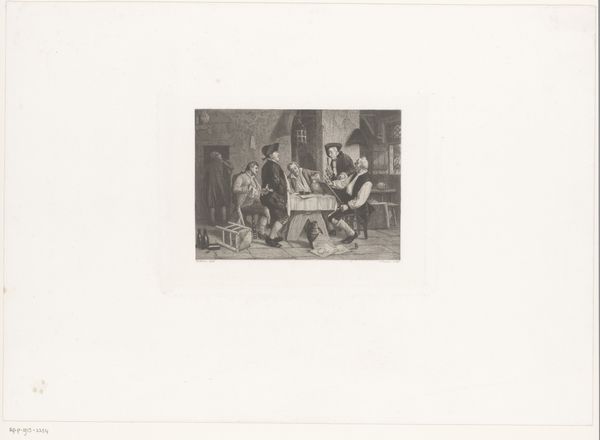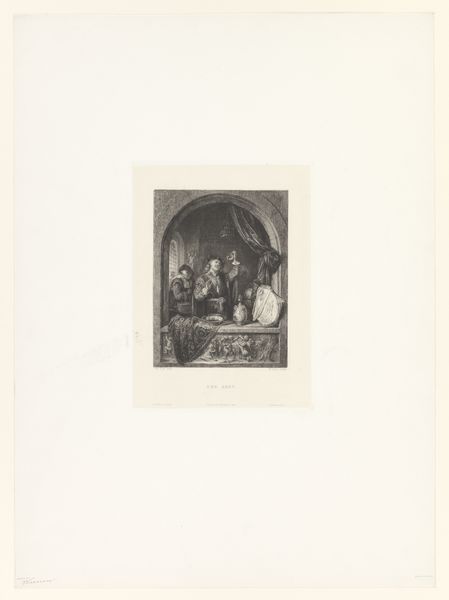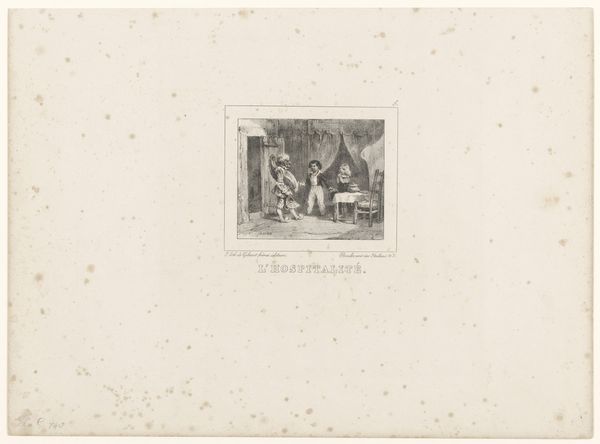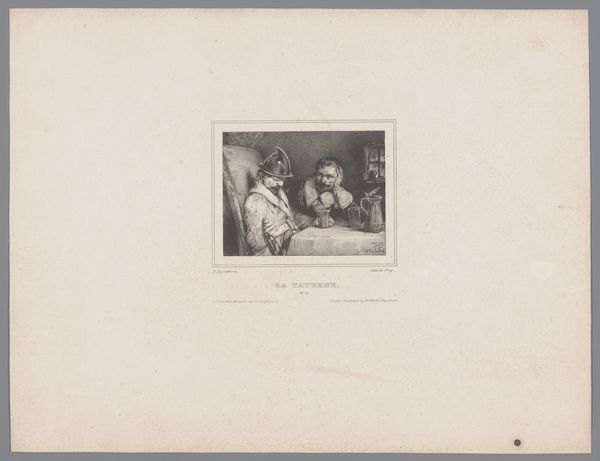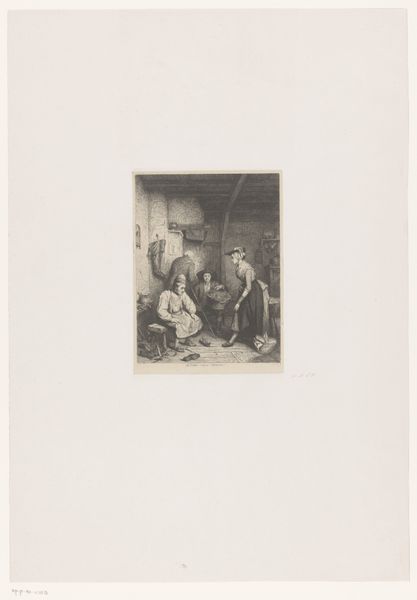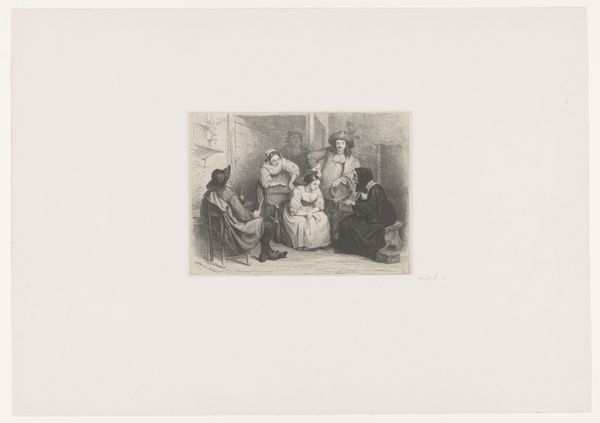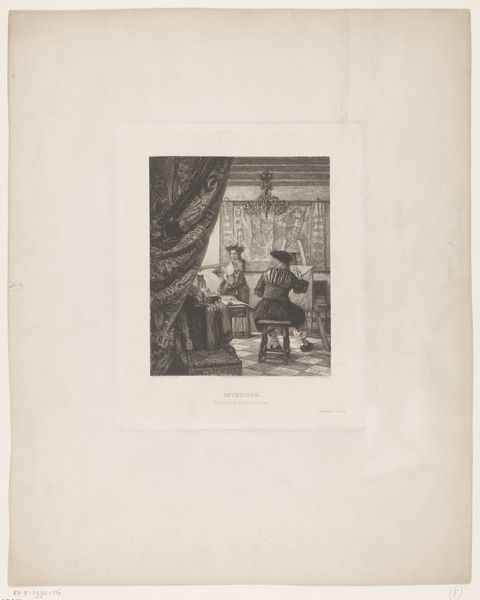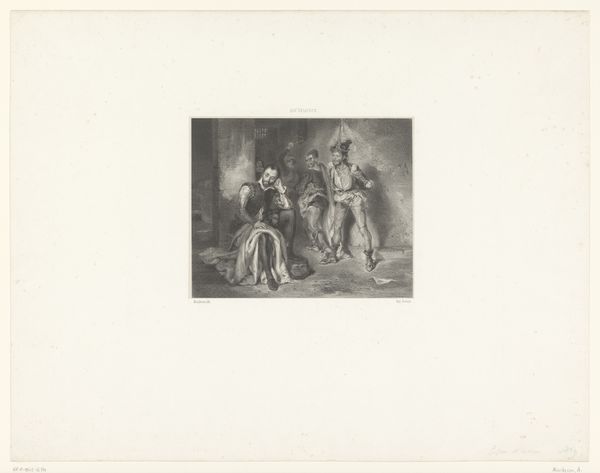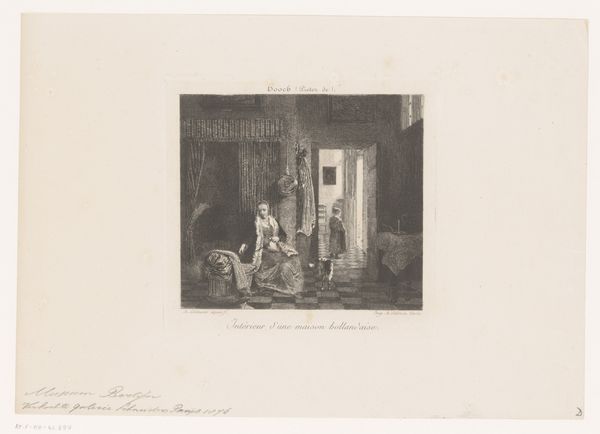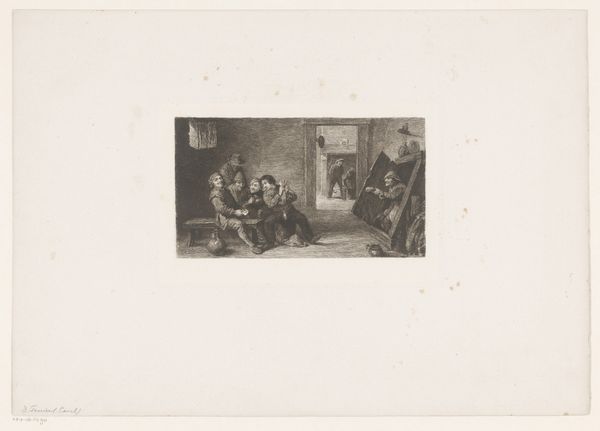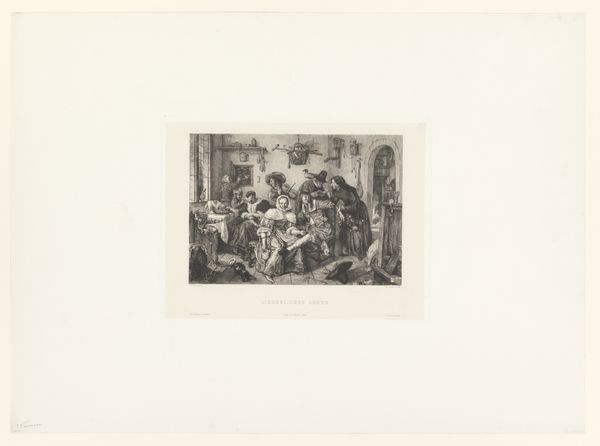
print, engraving
#
narrative-art
# print
#
old engraving style
#
white palette
#
figuration
#
romanticism
#
genre-painting
#
engraving
#
realism
Dimensions: height 127 mm, width 181 mm
Copyright: Rijks Museum: Open Domain
Curator: Welcome. Today, we're looking at "Twee vrouwen kijken toe hoe de smid aan het werk is in zijn atelier", an engraving by J. Hirchenhein, created sometime between 1819 and 1827. Editor: It's immediately striking how much light and shadow defines the mood. A rather muted piece, yet intense in its contrasts. Curator: Indeed. Observe how Hirchenhein employs line and tonal variation to articulate form. The figures, though realistically rendered, seem almost theatrical against the backdrop of the blacksmith's atelier. This use of chiaroscuro aligns with the Romanticism of the period. Editor: The workshop setting draws my attention. You can almost feel the heat emanating from the forge. What tools are these that shape not just metal but also societal structure, no? The labor of the blacksmith and its inherent dangers must have been quite a sight for the observing women. Curator: I agree. The contrast between the refined dress of the women and the coarse environment of the smithy introduces an interesting visual and thematic tension. Editor: And those very processes. See how he has rendered textures of worn leather and the rugged iron, alongside their quiet observation. These materials hold evidence of skill and the cultural values inherent in depicting labor. Curator: Quite. It also raises questions of spectatorship. What does it mean for these women to witness this scene? The very act of observation becomes part of the work's narrative structure. Editor: Yes, and thinking about who creates such an image, how prints such as this made the lives and toil of the working class visible and accessible. In that sense, it also speaks volumes about the Romanticism element in his time. Curator: Exactly, considering its narrative elements, coupled with its aesthetic arrangement, makes "Twee vrouwen kijken toe hoe de smid aan het werk is in zijn atelier" quite interesting indeed. Editor: It gives a fascinating view into 19th-century work life and observation from very interesting angles of class and gender.
Comments
No comments
Be the first to comment and join the conversation on the ultimate creative platform.
